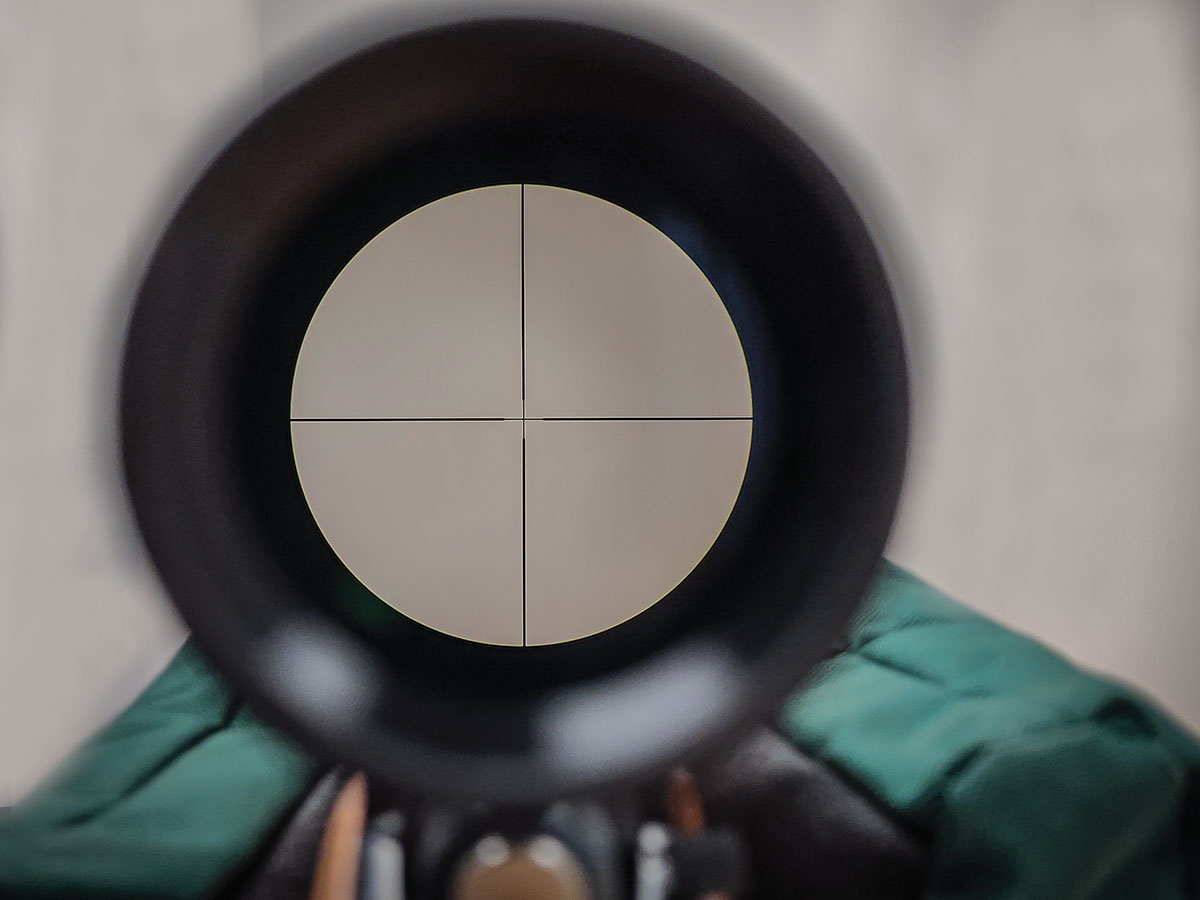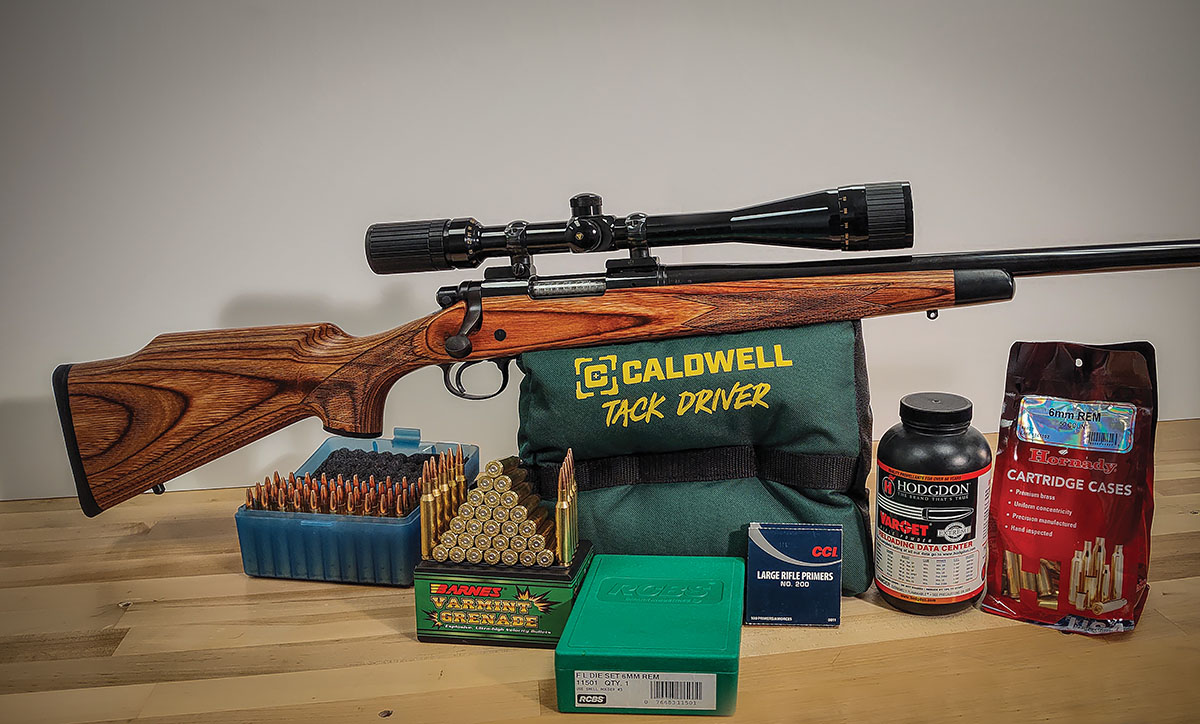
The 6mm Remington is a bit of a forgotten cartridge but still offers impressive performance. Finding factory-loaded ammunition can be challenging but it still can be found online easily enough. The alternative is handlaoding which is the route the author went.
While it is impossible for me to pick just one favorite rifle and load, there are simply way too many excellent options that can be tailored for any given situation and or need. If cattle crippling rodents need culling, there are a plethora of cartridges that work well at close range, long-range, and in the wind. Add in cost, and there are so many choices it’s enough to make a head spin. If I need a big game cartridge capable of delivering good terminal performance and energy on an elk at extreme ranges, there are many capable cartridges there as well. We live in a day and age where we have many options when it comes to cartridges, some will complain and say we don’t need all these different things and it’s simply history repeating itself. Sometimes, there is merit to these statements and even, at times, wisdom. However, there is no doubt that progress has been made and technology in terms of case design rifles and cartridges have come a long way.

This rifle is a classic-looking varmint rifle from the Remington Custom Shop, and at the time it was made it was peak technology for dedicated varmint hunters.
These design changes seem small and take time to fully develop into meaningful advancements, but when you look back over the last 100-plus years, you can certainly see it. Straight-walled cases in single-shot rifles were commonplace, and now we have lightweight semi-automatic rifles that can be adapted and chambered in a wide range of sleek bottleneck cartridges. These rifles and cartridges are easily adaptable for many different roles such as the AR-15.

The Bausch & Lomb 6-24x40mm optic may be old but it still tracks well and holds zero. The fine crosshairs are appreciated when taking longer shots on small rodents at longer ranges.
Gone are the days when Sharps rifles chambered in 45-70 Government were commonplace. Thankfully, they still exist and are available, but few other combinations have fared as well over the course of 150-plus years.
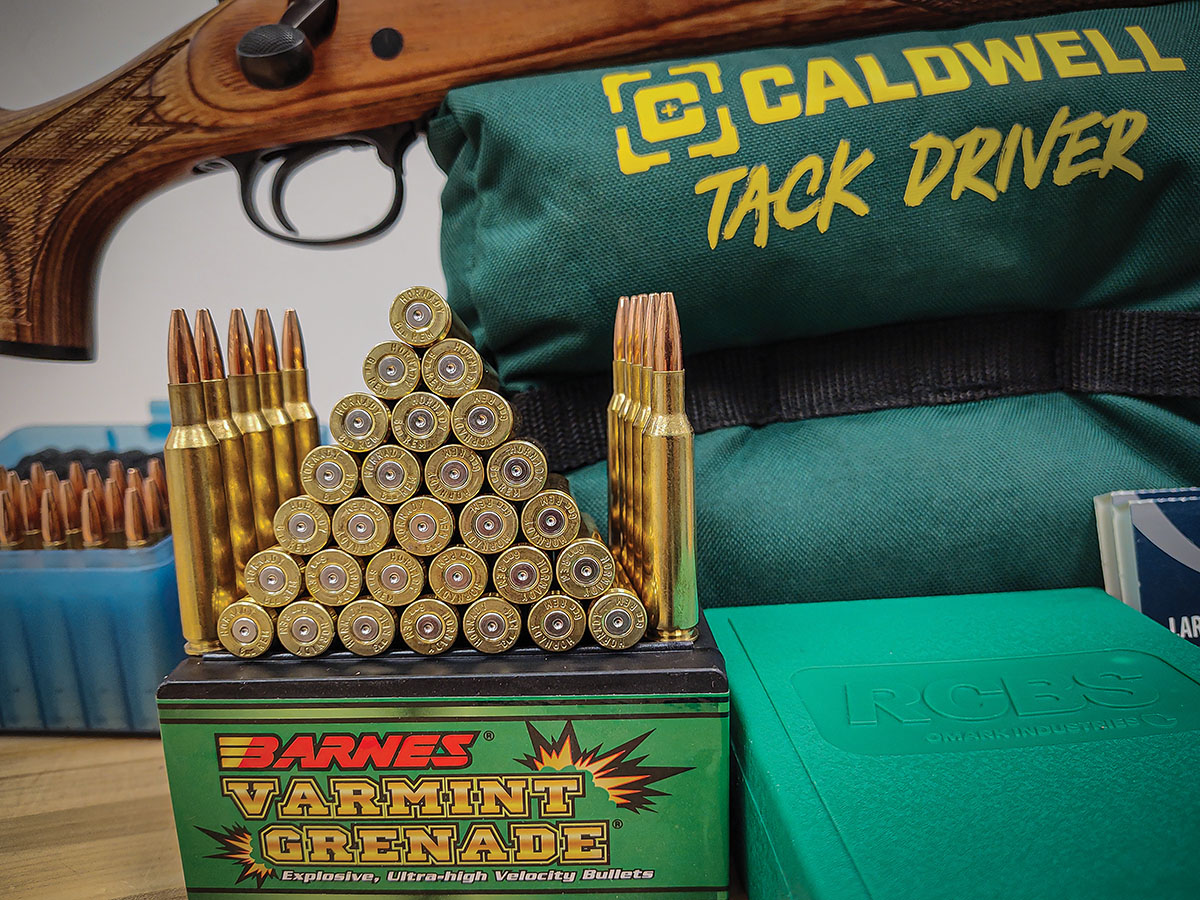
A favorite bullet for coyote-sized and smaller varmints is the 62-grain Barnes Varmint Grenade for its exceptional terminal performance and explosive expansion.
This brings us to a rifle and cartridge combination that is a little lost to time and history has forgotten a bit. Outrun in its first race against the 243 Winchester, the 6mm Remington never really got the recognition or praise it deserved and arguably never will among most folks. However, those of us who have spent the time to get to know the cartridge and the rifles chambered in it know how they can hold a special place in our hearts.
While I may have many different favorite rifles and handloads for each of them, the rifle and load were talking about here is certainly one of them. The rifle itself is a Remington Custom Shop Model 700 built in Ilion, New York, long before they moved operations to Sturgis, South Dakota, with Dakota Arms. In my mind, this alone is enough to make this rifle special. It was well built, displaying excellent fit and finish. The deep and bright bluing is paired nicely with a semi-gloss laminated stock with an ebony grip cap and forend tip. The bolt runs clean through the raceway and feels just as slick as some of my more modern-built Remington 700 rifles.
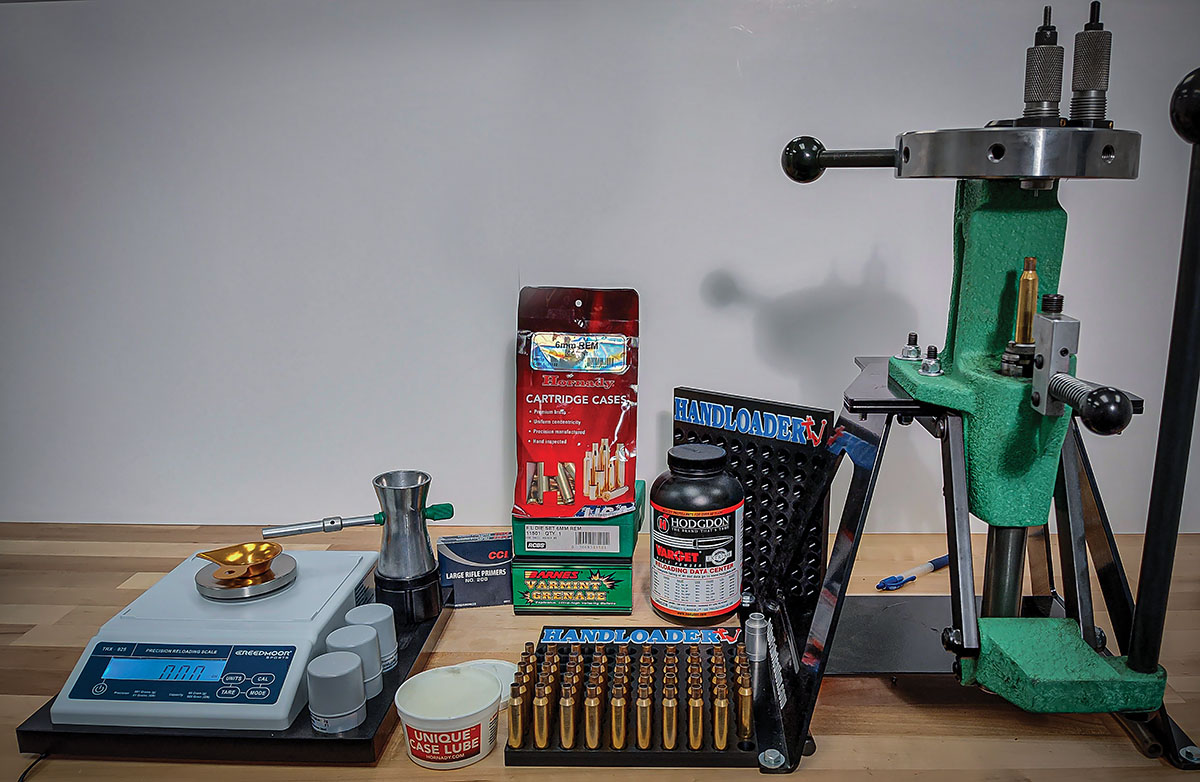
While factory ammo is available, it’s hard to argue with the performance of tailored handloads for a given rifle. It also saves money in the long run when you are shooting hundreds of rounds at varmints in a single season.
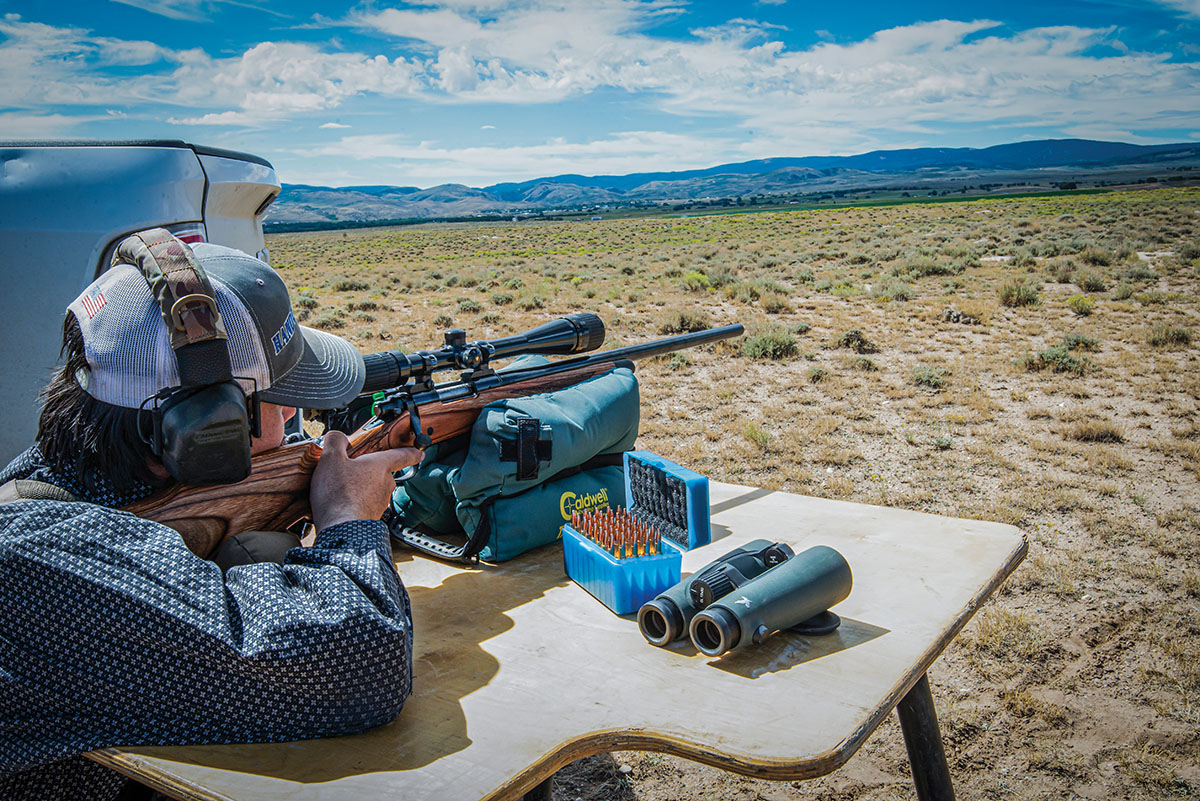
When distances are long and the wind is choppy, the 6mm Remington is an easy choice over most other 22-caliber options, the extra velocity and terminal performance on varmints is exceptional.
What really makes this rifle special, is the fact that this one was purchased at a fair and reasonable price from Stan Trzoniec, contributing writer for this magazine. He outfitted the rifle with a Bausch & Lomb 6-24x 40mm optic with a gloss finish that matches the bluing on the barrel and action. More importantly, he has had many adventures with this rifle, spending time in the field shooting varmints and hunting with this rifle. This was a favorite of his for Rock Chucks as the 6mm Remington bucks the wind much better than most of its 22 caliber counterparts and is able to push bullets faster than the 243 Winchester thanks to a slight edge in case capacity. Ultimately every rifle gets passed on, and Stan was kind enough to pass this one along to me. Telling me he “wanted to make sure the gun got into the right hands”.
Knowing the history, legacy and just how fond Stan was of this rifle, I wanted to continue that. My adventure started with some homework, being an avid handloader and with 6mm Remington ammunition rather hard to find. The first step was to find a good load that worked well. Typically, this involves shooting multiple strings of 5 shots and then following that up by shooting what is often referred to as a “5x5,” which is five groups of five shots each, allowing the barrel to cool in between strings. In the end, you have 30 shots on paper, in which you can average and record group size, velocity spreads, standard deviations, and mean radius to ensure you have a truly outstanding load.
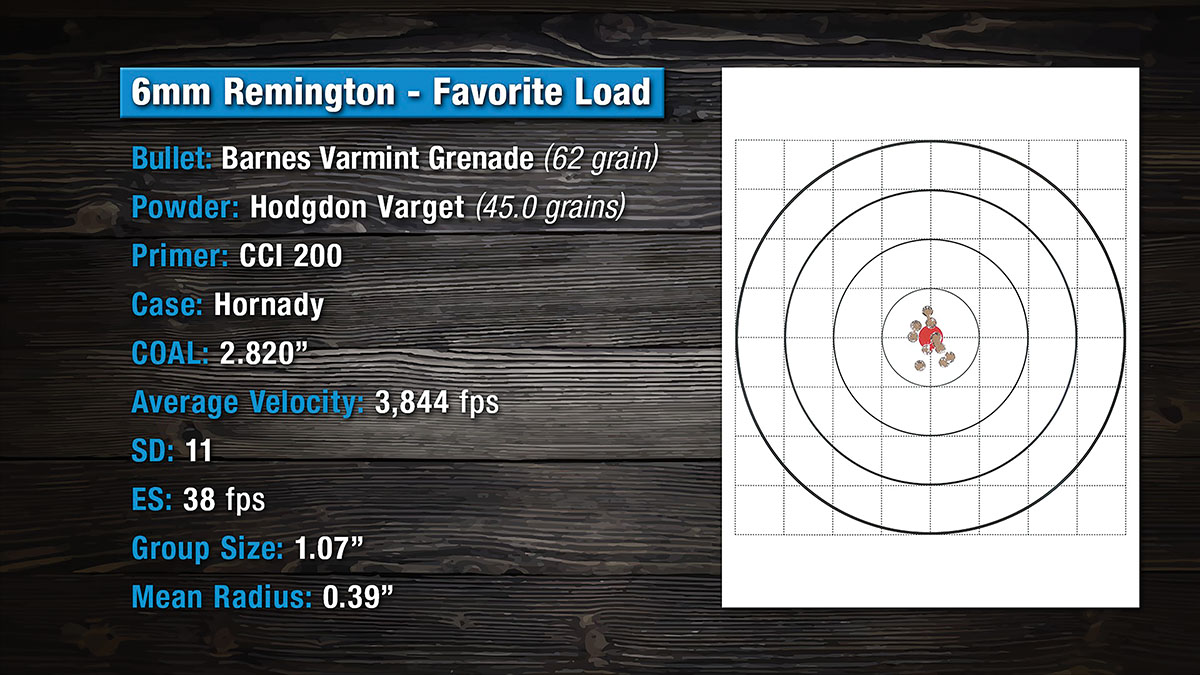
Shown is the author’s favorite load for this particular rifle. This 10-shot group just barely broke 1 inch at 100 yards and the rifle is perfectly zeroed with this load, despite traveling thousands of miles this year shooting varmints.
However, for this rifle, I was working on a bit of a deadline, not for the magazine but rather for an upcoming trip to Wyoming to hunt prairie dogs, ground squirrels and potentially woodchucks as well. So, mustering up as much of my handloading knowledge as I could while cross-referencing data and previous tests, I came up with a load. Using Hodgdon Varget powder, which has a proven track record for accuracy and low velocity spreads, a small test was put together to test various charge weights. As for the bullet, a 62-grain Barnes Varmint Grenade was a natural choice based on personal experience. This bullet and its terminal performance are exceptional for small varmints up to coyotes. Since I had no intention of saving any pelts, I gladly took as much terminal performance as possible. Within a matter of a few days I had a good load ready to go, just in time for my annual Wyoming trip with my Wife.
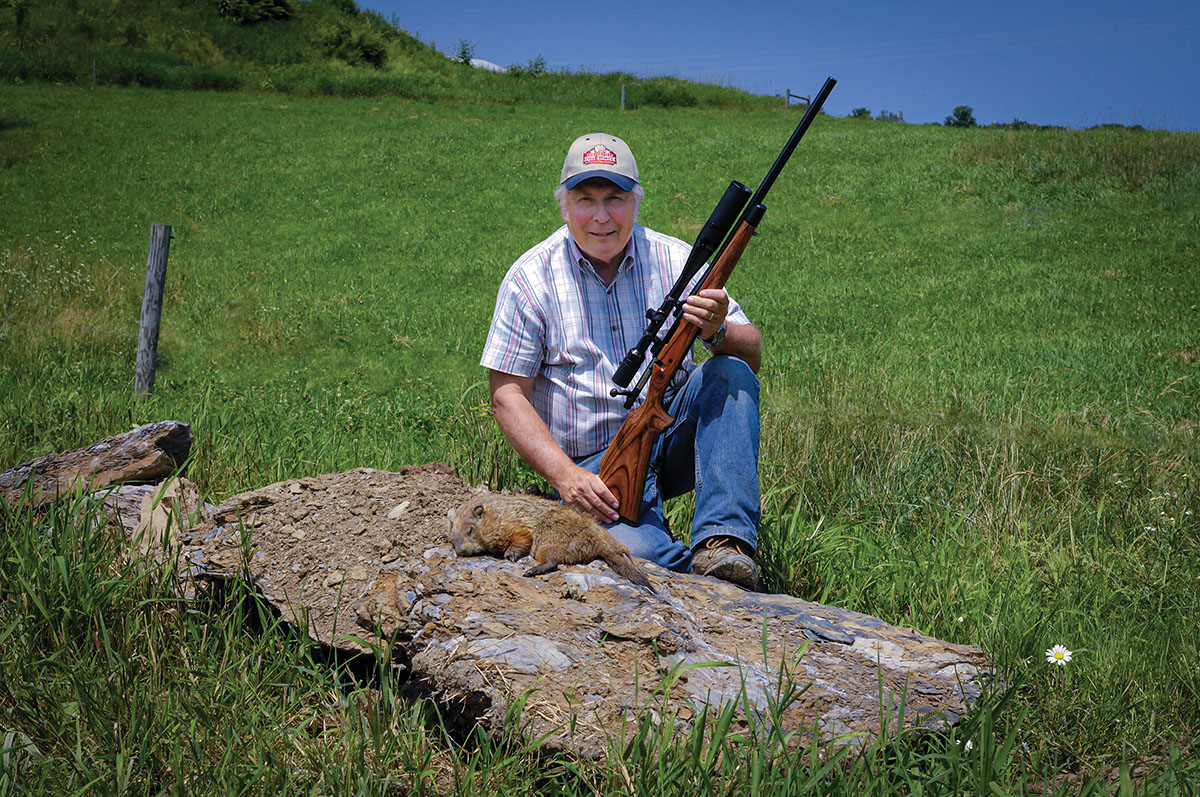
Stan Trzoniec, a contributing writer for Rifle magazine, was the former owner of this rifle. He had many great adventures with this rifle and I am very proud to continue that legacy. This is why this is one of my favorite rifles and loads. © 2025 Stan Trzoniec photo
The load I settled on used 45.0 grains of Hodgdon Varget powder a proven performer in many different cartridges; this is a max charge, so reduce by 10 percent for a start charge. I paired this charge weight with a 62-grain Barnes Varmint Grenade seated in Hornady cases and utilized CCI 200 primers. The overall loaded length was 2.820 inches after testing, the average velocity came out to 3,844 FPS. Testing this load on paper resulted in a 25-round group measuring out to just 1.47 inches. Once the barrel heats up, the rifle stabilizes and can hold impressive accuracy, making it ideal for extended sessions of shooting varmints. After the rifle was zeroed, another 25-round group was fired and this one measured out to a mere 1.30 inches and the shots were all less than .75 inches from the point of aim. This was more than adequate for shooting prairie dogs at 3-400 yards up in Wyoming.
Space will sadly not allow the detailing of all the adventures we had up there shooting prairie dogs and ground squirrels. However, suffice it to say that the 6mm Remington was the star of the show, especially when it came to shooting prairie dogs at extended ranges in the wind. The terminal performance was exceptional, and it made for an extremely satisfying time shooting.
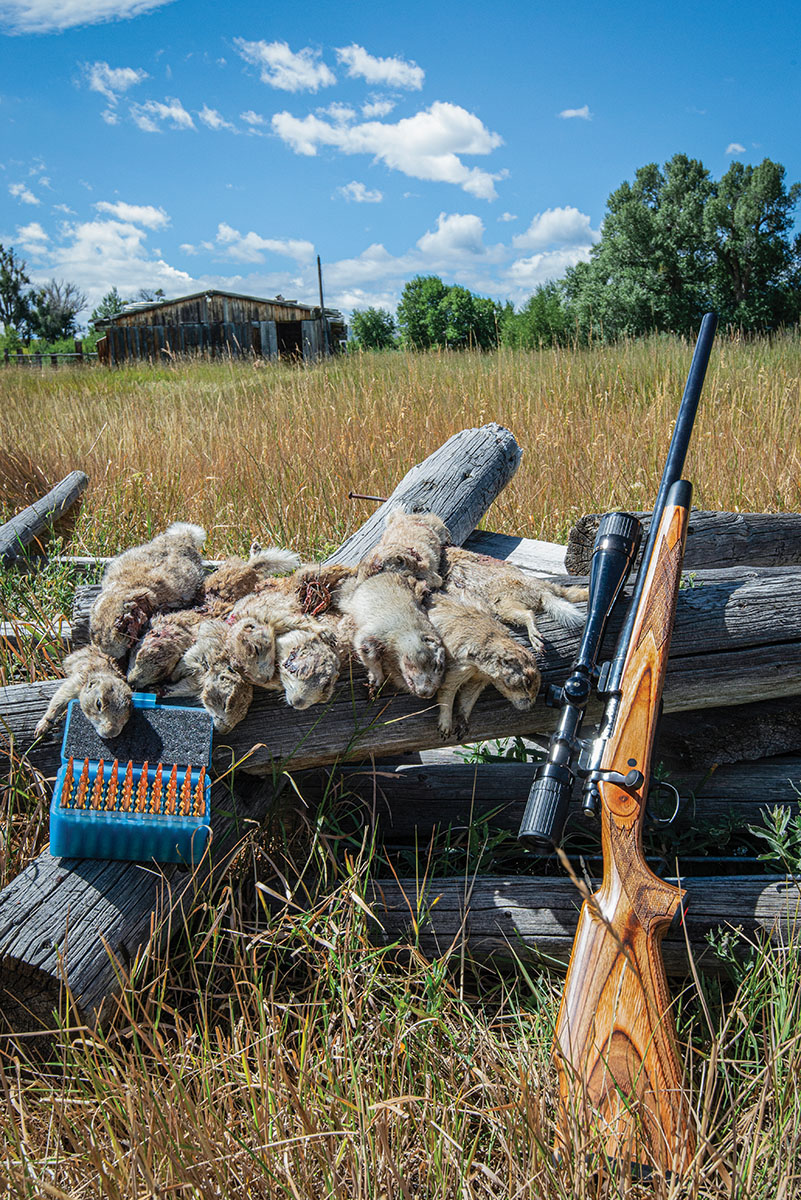
There is no doubt that the 6mm Remington is a capable and fun varmint cartridge. The weight of this rifle and the recoil this load exhibits still allow for spotting hits or misses and make recovering bodies easier. After all, only the confirmed kills count. © 2024 Lacey Polacek photo
In the process, I realized that this good old Remington 700 chambered in 6mm Remington had quickly become a favorite. Not just mine but also my wife’s; I am fortunate enough to have shared passions, which adds some extra insight into each of these rifles that I write about. We enjoyed five days of excellent shooting and put well over 450 rounds through the rifle on this trip alone.
The rifle was also the subject of many conversations held back at the lodge; it no doubt aided in the enjoyment of a grand adventure for two young people pursuing their passions of shooting, hunting, photography, and adventure.
Since then, the rifle has been on many coyote stands at twilight, as well as several range sessions testing other loads. All told, this rifle has probably had over 700 rounds through it and has proven accurate, reliable, and, maybe most importantly, fun. That is what this rifle was made for and it has yet to disappoint. I am happy to continue to take this rifle into the field and continue its legacy.



